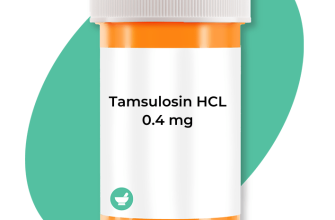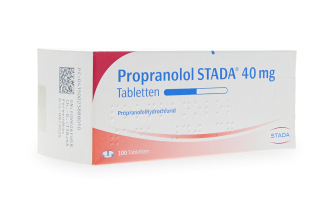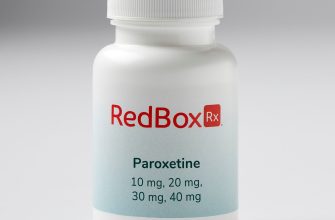Need to understand Nateglinide and its brand name, Starlix? Focus on these key points: Nateglinide is a short-acting meglitinide, meaning it stimulates insulin release only when blood sugar is elevated. This targeted action minimizes the risk of hypoglycemia compared to other diabetes medications.
Starlix is prescribed for adults with type 2 diabetes who aren’t adequately controlled by diet and exercise alone. Remember, it’s typically used as an add-on therapy alongside metformin or other diabetes medications. Doctors carefully consider individual patient needs, always prioritizing safety and efficacy.
Dosage varies greatly depending on individual response and overall health. Start with a low dose and gradually increase under close medical supervision. Regular blood glucose monitoring is crucial for adjusting dosage and preventing adverse events. Potential side effects include hypoglycemia (low blood sugar), weight gain, and gastrointestinal issues. Reporting any unusual symptoms to your physician is paramount.
Important Note: Nateglinide interacts with certain medications. Always inform your doctor about all medications, supplements, and herbal remedies you are taking. This proactive approach minimizes the chance of unexpected drug interactions and ensures safe and effective treatment.
Disclaimer: This information is for educational purposes only and does not constitute medical advice. Always consult with your healthcare provider before starting any new medication or making changes to your current treatment plan.
- Nateglinide and Starlix: A Comprehensive Overview
- Understanding Nateglinide’s Mechanism of Action
- Starlix Dosage and Administration Guidelines
- Adjusting Your Dose
- Missed Doses
- Administration
- Potential Drug Interactions
- Storage
- Monitoring Blood Sugar
- Cautions
- Disclaimer
- Common Side Effects and Potential Risks Associated with Nateglinide
- Gastrointestinal Issues
- Less Common, but Important Side Effects
- Interactions with Other Medications and Substances
- Alcohol and Nateglinide
- Other Drug Interactions
- Nateglinide and Starlix: Patient Selection and Contraindications
- Who Should Use Caution?
- Considering Individual Needs
- Long-Term Management and Monitoring of Patients on Nateglinide
- Assessing for Hypoglycemia
- Monitoring for Adverse Effects
- Lifestyle Modifications
Nateglinide and Starlix: A Comprehensive Overview
Starlix is the brand name for nateglinide, a medication used to control blood sugar levels in adults with type 2 diabetes. It belongs to a class of drugs called meglitinides. Nateglinide works by stimulating the pancreas to release more insulin when blood glucose is elevated after meals.
Here’s what you need to know:
| Aspect | Details |
|---|---|
| Mechanism of Action | Nateglinide closes ATP-sensitive potassium channels in pancreatic beta-cells, triggering insulin secretion. This action is glucose-dependent; insulin release only occurs when blood sugar is high. |
| Administration | Taken orally, usually before meals. Dosage is individualized based on blood glucose levels and response. |
| Benefits | Helps improve blood sugar control, particularly after meals. Can be used in combination with other diabetes medications. |
| Side Effects | Hypoglycemia (low blood sugar) is a common side effect, especially if the medication is taken without food or if the dose is too high. Other potential side effects include weight gain, nausea, and upper respiratory infections. |
| Precautions | Not suitable for individuals with type 1 diabetes, diabetic ketoacidosis, or severe liver or kidney impairment. Careful monitoring of blood sugar levels is necessary. Always consult your doctor before starting or stopping this medication. |
| Interactions | May interact with certain medications, such as sulfonylureas, which can increase the risk of hypoglycemia. Discuss all current medications with your physician. |
This information is for educational purposes only and does not substitute for professional medical advice. Always consult a healthcare provider for diagnosis and treatment of any medical condition.
Understanding Nateglinide’s Mechanism of Action
Nateglinide works by stimulating insulin release from the pancreas. Specifically, it acts as a rapid-acting, short-duration secretagogue.
Here’s how it achieves this:
- ATP-sensitive potassium channels (KATP channels): Nateglinide closes these channels in pancreatic beta cells. This closure is key.
- Depolarization: Closing the KATP channels leads to beta-cell membrane depolarization.
- Voltage-gated calcium channels: Depolarization opens voltage-gated calcium channels.
- Calcium influx: Calcium ions rush into the beta cells.
- Insulin release: The increased intracellular calcium triggers the exocytosis of insulin granules, resulting in a release of insulin into the bloodstream.
This mechanism is glucose-dependent. Nateglinide only stimulates insulin secretion when blood glucose levels are elevated. When glucose is low, nateglinide has no effect.
Important considerations regarding its pharmacokinetics:
- Nateglinide is rapidly absorbed after oral administration.
- It has a short half-life, requiring multiple daily doses.
- Its effects are relatively short-lived, mimicking the natural pulsatile release of insulin.
Remember, always consult your doctor or pharmacist for personalized advice on nateglinide use and potential interactions with other medications.
Starlix Dosage and Administration Guidelines
Begin with the lowest effective dose of Starlix (nateglinide). The typical starting dose is 120 mg three times daily, taken immediately before meals.
Adjusting Your Dose
Your doctor will monitor your blood sugar levels and adjust your dosage based on your response to treatment. Doses may be increased gradually, up to a maximum of 120 mg three times daily. However, exceeding 360 mg daily is not recommended.
- Important Note: Never adjust your medication without consulting your physician.
Missed Doses
- If you miss a dose, take it as soon as you remember, provided the next meal is within 30 minutes. If it’s been longer, skip the missed dose and resume your regular dosing schedule.
- Avoid double dosing.
Administration
Starlix tablets should be swallowed whole with a glass of water. Take them immediately before meals, as this is when they are most effective.
Potential Drug Interactions
- Inform your doctor of all medications you are taking, including over-the-counter drugs and supplements, as some medications may interact with Starlix.
- Grapefruit juice can affect the metabolism of nateglinide; avoid consuming it while taking Starlix.
Storage
Store Starlix at room temperature, away from moisture and direct sunlight. Keep it out of the reach of children.
Monitoring Blood Sugar
Regularly check your blood sugar levels as directed by your doctor. This helps in monitoring the effectiveness of Starlix and making necessary adjustments to your dosage or treatment plan.
Cautions
- Starlix is not for treating diabetic ketoacidosis or hyperosmolar hyperglycemic state. Consult your doctor for other treatments suitable for these conditions.
- Inform your physician if you experience any adverse effects while taking Starlix.
Disclaimer
This information is for educational purposes only and does not constitute medical advice. Always consult your healthcare provider for personalized guidance on your medication and treatment plan.
Common Side Effects and Potential Risks Associated with Nateglinide
Nateglinide, while effective for managing blood sugar, carries some potential side effects. Hypoglycemia (low blood sugar) is the most common, manifesting as shakiness, sweating, dizziness, and confusion. Always carry a fast-acting sugar source, like glucose tablets, to counter this. Inform your doctor immediately if hypoglycemic episodes are frequent or severe.
Gastrointestinal Issues
Upset stomach, diarrhea, and nausea are also possible. These are usually mild and often resolve without intervention. However, persistent or severe digestive problems require medical attention. Consider adjusting your dosage or timing of medication intake with meals to mitigate these effects.
Less Common, but Important Side Effects
Less frequently reported, but still possible side effects include weight gain, headache, and upper respiratory infections. These effects, while usually manageable, warrant discussion with your physician. They might indicate a need for dosage adjustments or alternative treatment options.
Remember, Nateglinide is not suitable for everyone. Individuals with certain conditions, such as severe kidney or liver disease, should avoid this medication. Always consult your doctor before starting any new medication, including Nateglinide, to assess your suitability and discuss potential risks in detail. They can help you weigh the benefits against the risks based on your individual health profile.
Interactions with Other Medications and Substances
Nateglinide, a component of Starlix, interacts with several medications. Concurrent use with sulfonylureas, such as glyburide or glipizide, significantly increases the risk of hypoglycemia. Your doctor should carefully monitor your blood glucose levels if you’re taking both medications. This heightened risk stems from the additive effect of both drugs on insulin release.
Alcohol and Nateglinide
Combining nateglinide with alcohol can also lower blood sugar, leading to hypoglycemia. Limit alcohol consumption while using Starlix, and always be aware of the potential for low blood sugar. Alcohol’s impact on liver function may also affect nateglinide metabolism.
Other Drug Interactions
Certain drugs, like beta-blockers, may mask the symptoms of hypoglycemia, making it harder to recognize a dangerously low blood sugar level. Inform your physician about all medications you are currently taking, including over-the-counter drugs and herbal supplements, to avoid potential interactions. This includes medications for high blood pressure, heart conditions, or infections. A thorough review of your medications is key to safe nateglinide use. This proactive approach minimizes the chance of adverse drug reactions.
Nateglinide and Starlix: Patient Selection and Contraindications
Nateglinide, marketed as Starlix, suits patients with type 2 diabetes who need additional glucose control beyond diet and exercise, but aren’t adequately managed with metformin alone. It’s particularly helpful for those needing improved post-meal glucose levels.
Who Should Use Caution?
Doctors carefully consider several factors. Patients with a history of severe hepatic impairment should avoid nateglinide due to increased risk of hypoglycemia. Similarly, those with severe renal impairment require close monitoring. Nateglinide isn’t appropriate for patients with diabetic ketoacidosis or hypersensitivity to the medication. Pregnancy and breastfeeding are also contraindications. Concurrent use with certain drugs, such as ketoconazole, may increase the risk of hypoglycemia and should be approached cautiously with appropriate dose adjustments or alternative therapies.
Considering Individual Needs
Individual patient characteristics significantly influence treatment decisions. Age, overall health, and other medications all play a role. Regular monitoring of blood glucose levels is vital to manage potential hypoglycemic events. Doctors discuss risks and benefits thoroughly with each patient, tailoring treatment to individual requirements and closely observing patient response.
Long-Term Management and Monitoring of Patients on Nateglinide
Regularly monitor blood glucose levels, aiming for HbA1c below 7%. Adjust Nateglinide dosage based on these readings and patient response. Consider adding metformin or other medications if glycemic control remains suboptimal despite dosage adjustments.
Assessing for Hypoglycemia
Patients should be educated on hypoglycemia symptoms (tremor, sweating, confusion). Frequent blood glucose checks, particularly before meals and at bedtime, are crucial. Encourage patients to carry glucose tablets or gel for quick treatment of hypoglycemia. Regularly review medication interactions, paying close attention to drugs that may increase hypoglycemia risk (such as sulfonylureas).
Monitoring for Adverse Effects
Track any weight changes. Assess for gastrointestinal side effects like nausea or diarrhea. Document any reported allergic reactions. Regularly discuss potential side effects and strategies for their management. Consider alternative treatment options if side effects become intolerable.
Lifestyle Modifications
Encourage a balanced diet with a focus on complex carbohydrates and fiber. Promote regular physical activity, ideally at least 150 minutes of moderate-intensity aerobic exercise per week. Advise on stress management techniques to improve overall health and blood glucose control. Review adherence to the treatment plan, providing support and addressing any barriers to compliance.









